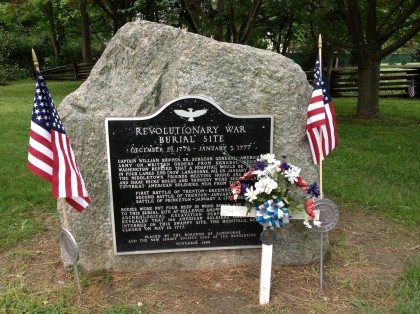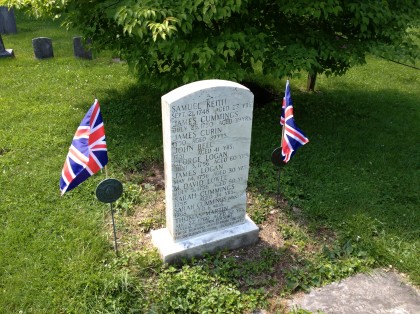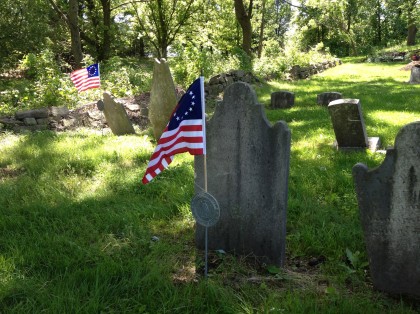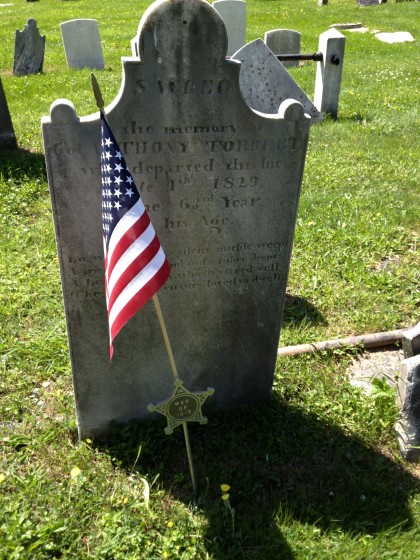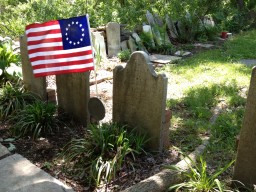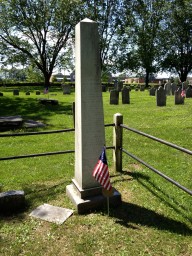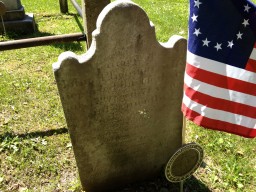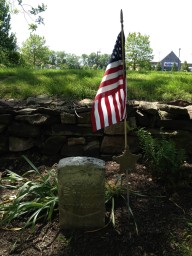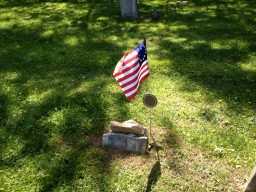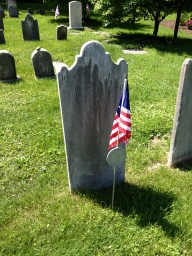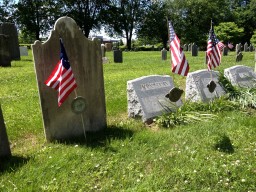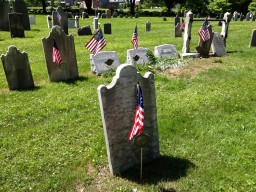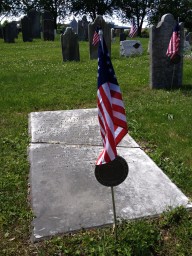I’m not too surprised by this:Â A GOP strategist is behind some of the Bloomberg ads. My guess is that some in the GOP establishment see this as an opportunity to weaken some key Democrats with their base. I think this strategist makes the mistake of believing there’s a strong movement for gun control among southern Democrats. I think this will tend to help Pryor rather than hurting him, and even Toomey is going to have base troubles because of the deal he made with Manchin. There are still Republicans out there that still think gun control can be a winner.
Author: Sebastian
Rhode Island Update
Apparently gun control bills are “in limbo” in the Ocean State, as they are entering the final weeks of the 2013 legislative session. It looks like the dodge is getting tough on existing gun crime, and creating a task force to review gun laws. If there’s anything politicians love it’s offering the appearance of getting tough on crime, and creating task forces. You can throw that stick and they’ll chase it every time, especially if they are getting real grassroots opposition. In a legislative fight like this, it buys you time, which is usually a good thing when you’re dealing with an emotional response to a tragedy. The gods of “something must be done” demand appeasement. Maybe one day, voters will become enlightened enough to accept that maybe the response to “something” doesn’t, and probably shouldn’t involve a legislative cure.
Keeping the Pressure On
Democrats in Colorado are worried about these recall efforts:
But even though it’s not an election year, the office is in full campaign mode, with volunteers working the phones and reviewing maps in anticipation of a new front of modern campaigning – the recall phase.
A handful of Democratic state lawmakers in Colorado face recall petition efforts in what looks to be the first wave of fallout over legislative votes to limit gun rights.
We’ve already had one recall come up short, but it garnered enough support the lawmaker ought to be worried. These petitions don’t even really have to succeed, we just need to keep the dial turned up on the oven as much as we can until 2014. We can never make it an easy vote for them. The fact that they are having to call up volunteers and spend resources to fight these recall efforts is excellent. It’ll send them into 2014 tired. We just need to have more stamina than our opponents.
The Suck in Illinois Continues
Apparently, like Darth Vader, they appear to be altering the deal. I would work to kill anything worse than what they offered. What’s likely happening is they realized that while the previous offer wasn’t everything we wanted, it was strategically beneficial to us over the long term. They likely don’t find that acceptable. If you live in Illinois, call your Senators, and make sure they understand that you are not at all happy with this crap. Tell them to oppose Amendment 4 to HB183.
It’s been instructive watching this unfold, because it shows you how committed these people are to the hate. From a political standpoint, they’ve been backed into the corner by the federal courts, and not by us. You can always go back to constituents and tell them your hands were tied, and the court forced us to make those changes. Additionally, you can use weak gun laws forced on you by the courts to deflect blame for your own failures, as Philly politicians are expert at doing. Politically, this wouldn’t really hurt them, yet the obstinance continues. Why? Because they hate us.
Remembering our War Dead: Some Local History
I thought I’d do something a little different this year as a memorial day post. I happen to live in an area that’s pretty rich in history. Bucks County was one of the original three counties founded by William Penn in 1682. The others were Chester and Philadelphia counties. Going back that far, we have a lot of old cemeteries around here, a number of which hold war dead. We’ll start in the borough of Langhorne, a mile or so from my house:
Langhorne was not the name of the borough until 1876, when it was renamed after Jeremiah Langhorne. Prior to that it was called Attleborough, and at the time of the Revolution it was known as Four Lanes End. Nearby houses and churches served as field hospitals for the Battles of Trenton and the Battle of Princeton. Many did not make it. Buried here are 166 soldiers of the Continental Army. Burial in mass graves seems to have been the norm, rather than the exception, for Revolutionary War dead.
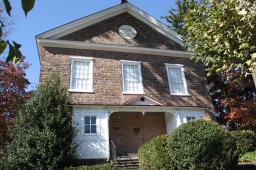 We headed up the road a piece to the Borough of Newtown. Newtown was founded by William Penn himself in 1684, only two years after the establishment of the county. The Newtown Presbyterian Church was founded in 1754, with the old church having been built in 1769. This historic church played a role during the American Revolution as a field hospital:
We headed up the road a piece to the Borough of Newtown. Newtown was founded by William Penn himself in 1684, only two years after the establishment of the county. The Newtown Presbyterian Church was founded in 1754, with the old church having been built in 1769. This historic church played a role during the American Revolution as a field hospital:
In December of 1776, because it was one of the largest buildings in town, General Washington commandeered it and used it as a hospital, a jail and a P.O.W. “camp.â€Â After the Battle of Trenton, several hundred Hessians were held there before they began their long march to Philadelphia where they would be exchanged for American soldiers.
Behind the old church is a grave site. I was surprised to find this.
Buried here are dead from the French and Indian War, or the Seven Years War as it is known in Europe. These soldiers died for Crown and Country, rather than for the United States, so their graves have been marked with the Union Jack.
Unfortunately, most of the grave markers are faded to the degree that they are unreadable without the use of a rubbing. Many of the men buried here are veterans who died years later. Some markers are more legible.
This is the grave marker of Colonel Anthony Torbert. Here’s some information I’ve been able to find about Colonel Torbert’s service.
The War of 1812, with Great Britain, stimulated the military ardor of the citizens of Bucks county, while the near approach of the enemy to Philadelphia gave their patriotism definite shape. The first effort to raise troops in the county was made at Newtown, where a meeting was held at Charles Hinkle’s tavern, Saturday, August 7, 1813, to form a volunteer company whose services were to be offered to the President. The 14th of July, 1814, the President called for ninety-three thousand five hundred militia, of which Pennsylvania was to furnish fourteen thousand. On the 16th, a number of the citizens of Bristol, Bensalem and Middletown met at Newportville and pledged themselves to march at a moment’s warning in the case the “forth district be invaded.” and, at an adjourned meeting on the 23rd, the citizens were recommended to meet together for drill. The citizens of Doylestown and vicinity agreed to associate for the purpose of acquiring some knowledge of the “art of war,” and met to drill in front of the court-thouse three times a week. Harman Vansant, then brigade-inspector, notified the enrolled inhabitants of the county to form themselves into three regiments, and select field officers. The upper regiment was composed of the enrolled inhabitants of Milford, Richland, Rockhill, Hilltown, Springfield, Durham, Nockamixon, Haycock and Bedminster; middle regiment–Tinicum, Plumstead, Solebury, Buckingham, New Britain, Warwick, Warminster, Warrington and Wrightstown; and the lower regiment, North and Southampton, Middletown, Newtown, Upper Makefield, Falls, Lower Makefield, Bensalem and Bristol township and borough. These regiments elected the following field-officers: Upper regiment–Colonel, Jacob Kinter, Lieutenant-Colonel, Christian Bloom, Majors, John Buck and John Stoneback. Centre–Colonel, William Long, Leiutenant-Colonel Samuel Abernathy, Majors, Samuel D. Ingham and Edward Yerkes. Lower–Colonel, Louis Bache, Lieutenant-Colonel, John S. Benezet, Majors Orren C. Starr and Anthony Torbert. The militia of this county were known as the First Brigade, Second Division, of which Samuel Smith was appointed Brigadier-General, William C. Rogers, Aid-de-camp, and Elisha Wilkinson, Quartermaster. Josiah Y. Shaw, of Doylestown, was appointed Aid-de-camp to Major-General Scheetz, division-commander. The quota from this county, consisting of eighty-eight artillery and eight hundred and fourteen infantry and riflemen, to be taken from the first and second classes of enrolled militia, was called for the 12th of August. They were taken from the four old militia regiments and consolidated into a battalion, of which Andrew Gikeson was appointed Leiutenant-Colonel and John S. Benezet and Isaac Griffith Majors. The drafted militia assembled at Thomas Bean’s tavern, Warminster, Sunday, the 18th of September, to march to Marcus Hook. General Smith and his staff were there. A large concourse of people came toether to see them off. The troops were formed in hollow square, when the Reverend Thomas B. Montanye delivered an appropriate address. They marched to Philadelphia, and thence to their destination in steamboats. The drafted militia were encamped in the court-hosue yard at Doylestown a day or two.
As best I can find, the militia units from Pennsylvania that were federalized for the War of 1812 were used to augment the defenses of Baltimore and Philadelphia, but did not see any action. Here are some other grave markers in the Cemetery of the Newtown Presbyterian Church.
UPDATE: BTW, if you want to go throw back a few pints at the Thomas Bean’s Tavern, it’s called Mike’s Bar and Grill now, but the building is still there and still operating as a tavern. Their website mentions nothing of the history, which is a shame.
More on “Two Americas”
I hope everyone is enjoying their holiday weekend. I am busy sealing cracks in the concrete floor of my office, in preparation for new carpet. After the sealant cures, I’ll be applying some Drylok to the parts I had to patch with fresh cement.
I noticed today that Chris from Alaska has an excellent post that furthers the “Two Americas” theme we’ve talked about sometimes on here, noting which states are over and underrepresented in the US military, and which states are losing veteran population the quickest. I am not surprised to see Pennsylvania is underrepresented, despite being the 6th most populous state, nor am I surprised we’re one of the heavy losers in terms of veteran population. Our veteran population trends older, and it’s relatively unheard of for young people around here to join the military.
Have a Happy, Safe Holiday Weekend
I hope everyone enjoys their memorial day, even though the weather doesn’t know what season it wants to be. I actually got a little sleet in the rain today, and there are other parts of Pennsylvania that are getting a little global warming falling from the sky. Today is one of my office days, and I’m busy working on drawings to give to the contractor to fit out our new data center. I’m hoping to finish so I can actually enjoy a holiday weekend.
Things I Didn’t Know
For something work related, I was looking up the color codes of the activation temperature for automatic sprinklers, and found this tidbit I didn’t know:
In 1812, British inventor Sir William Congreve patented a manual sprinkler system using perforated pipes along the ceiling. When someone noticed a fire, a valve outside the building could be opened to send water through the pipes.[3]
A large furniture factory had repeatedly burned down, and Hiram Stevens Maxim was consulted on how to prevent a recurrence. As a result, Maxim invented the first automatic fire sprinkler. It would douse the areas that were on fire, and it would report the fire to the fire station. Maxim was unable to sell the idea elsewhere, but when the patent expired the idea was used.[4][5]
Of course, Hiram Stevens Maxim is well known for another invention, which many of us are familiar with. A whole generation of unlucky Europeans, some Americans, Canadians and Australians, became unfortunately familiar with Maxim’s other invention as well, when they went over the top and were cut to pieces.
The Hackable Gun
I don’t fundamentally have a problem with the market offering solutions like this one, to allow users to track and disable their gun if it’s stolen, like you would a smart phone. My only concern over the development is that it will soon become mandated, because on my own, I would never buy one.
For one, it’s useless. A firearm is a mechanical device. Any disabling technology could easily be circumvented. The article brings up an example of OnStar, but most cars these days have electronic ignition, and a car can essentially be made into a brick just by the car’s computer refusing to operate the ignition (and there are ways around that, still). Firearms use mechanical ignition. Electronic ignition has been tired, but it was very unreliable. Any “safety” which causes the gun to be disabled electronically could easily be re-enabled by anyone with enough mechanical aptitude to change a car tire. The only way you could successfully disable a gun is by destroying the mechanical parts. If this “smart gun” activated some thermite and seized up the lockwork, maybe it could work. Of course, I’m not sure how safe that would be under ordinary circumstances, and it wouldn’t be too long before Cletus burns the house down because he misplaced his gun and thought it might be stolen. That’s not even considering whether you could hack the device. Even if you could make a gun that had reliable electronic ignition, there would be ways around it. Guns are much simpler than cars. I tend to view that “smart gun” technology, even if it were made to be reliable enough, would only really be useful for reducing the already low number of accidents. We’d be better developing smart plastic buckets and smart bath tubs if it’s really lives that are the main concern here. Smart guns wouldn’t do anything to hinder criminals.
There’s a lot of hand wringing by the folks who dislike gun ownership over the fact that guns are dangerous, and can’t really serve their intended purpose without being dangerous. There are no safe guns, there are only safe users.
Quote of the Day
This incident illustrates, if nothing else, the endpoint of the social engineering of the West.  It has been remarkably effective. From a certain point of view the British crowd behaved perfectly and this is the way “they†all want us to behave. The populace sheltered in place, didn’t do anything rash, talked to the perpetrators as people. They waited for the police to come and the hospital helicopter to take the corpse away. Some will doubtless get counseling to overcome their shattering experience.
The response? British soldiers should not wear uniforms. Keep Calm and Carry.

